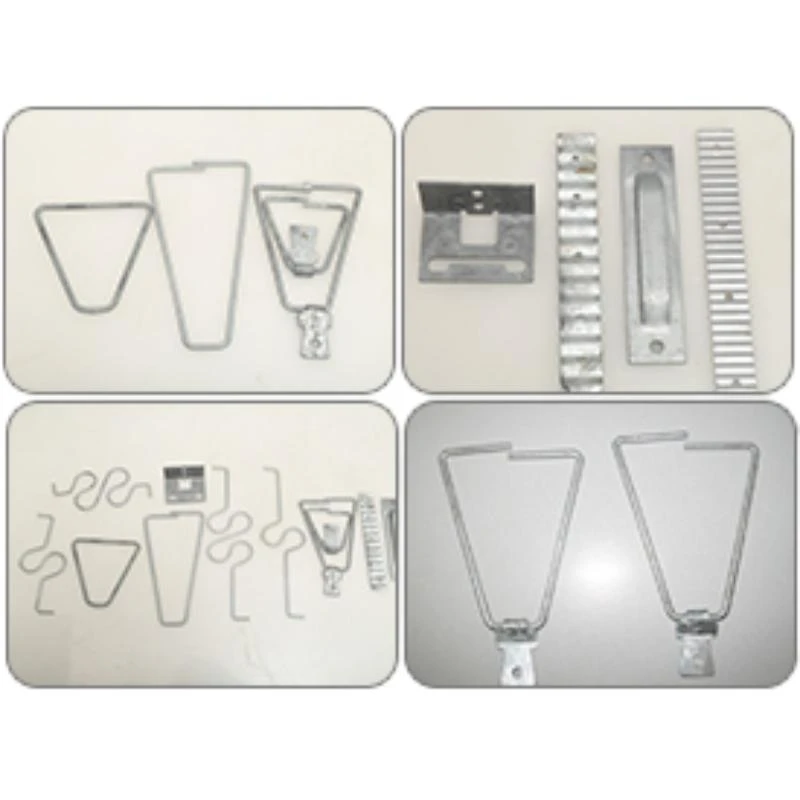
- Mobile Phone
- +8613931874955
- sales@cntcmetal.com
l shape wall ties
Understanding L-Shape Wall Ties Importance, Applications, and Benefits
L-shape wall ties are critical components in modern masonry construction, serving an essential purpose in the structural integrity of buildings. Their unique design allows them to effectively link different wall elements, providing stability and strength to various types of structures. This article delves into the significance, applications, and benefits of L-shape wall ties in construction projects.
The Role of Wall Ties in Construction
Wall ties are essential elements in masonry, significantly contributing to the overall structural stability of a building. They connect two independent walls, usually in cavity wall constructions, where one wall acts as the load-bearing structure, and the other provides weather resistance. The primary purpose of wall ties is to ensure that the two walls work together harmoniously, transmitting forces between them and preventing issues related to differential movement, such as cracking or bowing.
L-Shape Wall Ties Design and Functionality
L-shape wall ties, as the name suggests, are designed in the form of an L. This specific shape allows for effective anchoring of the tie into both the inner and outer walls of a cavity wall. The horizontal leg of the tie anchors into the outer leaf of the wall, while the vertical leg embeds into the inner leaf. The unique design ensures a stronger connection compared to traditional straight wall ties, as it provides additional support and stability by increasing the contact area and resistance to shear forces.
Applications of L-Shape Wall Ties
L-shape wall ties are widely used in various construction scenarios, including
1. Cavity Wall Construction L-shape wall ties are predominantly used in cavity walls, which consist of two layers of masonry separated by a gap. The ties connect the two layers, ensuring they act as a single structural unit.
2. Renovations and Restorations In the context of refurbishing historical buildings, L-shape wall ties allow for the integration of modern structural solutions while preserving the architectural aesthetics.
l shape wall ties

3. Retrofitting They are also employed in retrofitting projects where structural integrity is compromised. By reinforcing existing walls with L-shape ties, architects and engineers can enhance stability without extensive reconstruction.
Benefits of Using L-Shape Wall Ties
1. Enhanced Structural Integrity L-shape wall ties provide superior strength and stability, making them ideal for areas susceptible to lateral forces, such as wind or seismic activity.
2. Reduced Cracking and Bowing The unique design of L-shape ties significantly minimizes the risk of cracking and bowing in walls. By effectively managing differential movement, they promote the longevity of the structure.
3. Ease of Installation The installation of L-shape wall ties is relatively straightforward. The design allows for quick and efficient embedding into the masonry, ensuring timely project completion.
4. Versatility They can be used with various materials such as brick, block, and stone, making them suitable for diverse building types and architectural designs.
5. Cost-Effectiveness Although there is an upfront cost associated with L-shape wall ties, their ability to improve structural performance and reduce long-term maintenance expenses makes them a cost-effective solution.
Conclusion
In summary, L-shape wall ties are indispensable in contemporary construction, providing strength, stability, and longevity to buildings. Their unique design and functionality cater to various applications while ensuring structural integrity amid dynamic forces. For architects, engineers, and builders, understanding the benefits and importance of L-shape wall ties is crucial for delivering robust and reliable structures. As the construction industry continues to evolve, the reliance on innovative solutions like L-shape wall ties will only increase, paving the way for safer and more resilient buildings in the future.
share:
-
Wall Ties for Concrete: Invisible Guardians of Building Structural StabilityNewsAug.08,2025
-
Timber Frame Wall Ties: Stable Bonds for Load TransmissionNewsAug.08,2025
-
Stainless Steel Woven Wire Mesh: A versatile material from boundary protection to functional supportNewsAug.08,2025
-
Powder Coat Coil Springs: Creating peace of mind and reliability with sturdy protectionNewsAug.08,2025
-
Floor Standing Sign Holder: A Powerful Assistant for Flexible DisplayNewsAug.08,2025
-
Binding Iron Wire: An Invisible Bond for Building StabilityNewsAug.08,2025
-
Yard Sign Stakes: Reliable Guardians of Outdoor SignsNewsAug.04,2025



















